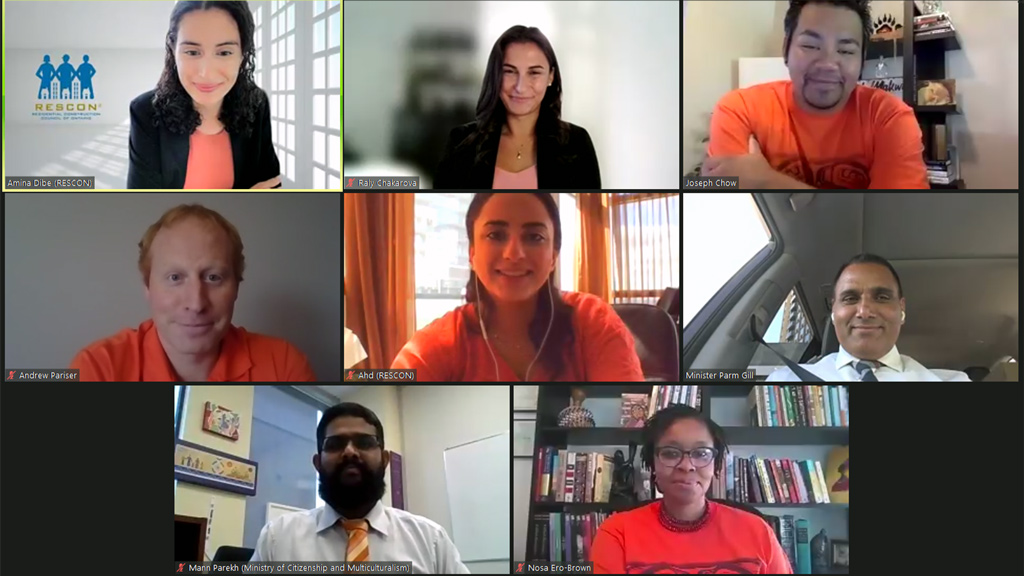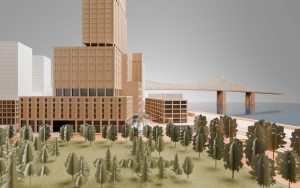There is a “racial reckoning” that has occurred over the past year and although many companies have taken action to combat racism, it’s important these actions go beyond the immediate gut reaction and are sustainable in the long-term.
That was the consensus from panellists at the second annual Addressing Racism in Construction event organized by the Residential Construction Council of Ontario.
“There is a reckoning happening but one of the challenges that I see in this line of work is the opportunity that we should not miss to make this work sustainable,” said Nosa Ero-Brown, assistant deputy minister with the Ontario Anti-Racism Directorate. “Quite often it’s easy for organizations and individuals to take action by talking or by Tweeting or various actions that it would appear on the surface that we are doing something but then the tendency is to go right back to the way we are doing things.”
Having those difficult conversations, keeping them going, getting to the heart of the matter and figuring out how to make progress is key, she added.
“A year later (after the murder of George Floyd) I will admit this time it does seem like a lot of investments but we absolutely need to do more, it’s not enough,” Ero-Brown said. “I think working with industry, with government, we need to come together to really have a community solution to what we are seeing in terms of systemic racism and hate.
“I’m in the Ontario public service and I can tell you just because you have an increase in the number of Black people in leadership doesn’t mean those Black people are safe, doesn’t mean they feel like they belong. There is a next level that needs to be done.”
Chris Campbell, equity and diversity representative with the Carpenters’ District Council of Ontario, said while he applauds the various levels of government for putting millions of dollars into recruiting and training BIPOC youth and women in the construction industry, it’s just as important to have a statistical data breakdown of various racialized groups and to measure their successes and failure in the trades.
“My big thing is to be able to measure our progress. To do that we need all different facets of industry players to start putting this information together, that way we can pinpoint which community needs help and we can decipher it and from there go at it instead of guessing and throwing money at the issue,” said Campbell.
Joseph Chow, a service technician with Tridel and a First Nation, Metis and Inuit student adviser for the York Region District School Board, said one of the long-term challenges for his culture is needing to prove to the government that they self-identify as First Nations.
“We are the only culture that needs to show a status card to say, ‘I am First Nations,’ ” said Chow.
“You can say you’re First Nation but the government doesn’t see you as being First Nation. To assist with the statistics we could have 150, 200 First Nation people on a jobsite but they don’t self-identify as First Nations because the government doesn’t see them as First Nations. That is one of the largest hurdles for our long-term goals, for my culture coming into the construction field: getting everybody self-identified that needs to be self-identified and who wants to be self-identified.”
Campbell said the stigma and the myth that hinders Black youth from seeking opportunities in the industry needs to be addressed.
“Perception is reality,” Campbell said. “Let the customer, the client, the individuals we’re aiming TV ads, radio ads at…we should let them be portrayed more in these ads and these messages. Show the 21-year-old young person as a tradesman leaving work in his truck going to his home…showing him achieving to let them see how achievable this is.”
Chow agreed the perception around careers in the trades needs to change.
“A lot of people are pushing their children to be a doctor, to be a lawyer, but it’s not for them. Construction could be for them,” said Chow. “They need to know that construction isn’t just labour.”
The big challenge is not only getting youth in the door but getting them to stay, he noted. He suggested a think-tank to brainstorm potential solutions to the issue.
“I don’t know what’s going to bring them in but it needs to be something,” Chow said. “This is a huge question to answer: what does the construction industry need to do?”
Follow the author on Twitter @DCN_Angela.











Recent Comments
comments for this post are closed